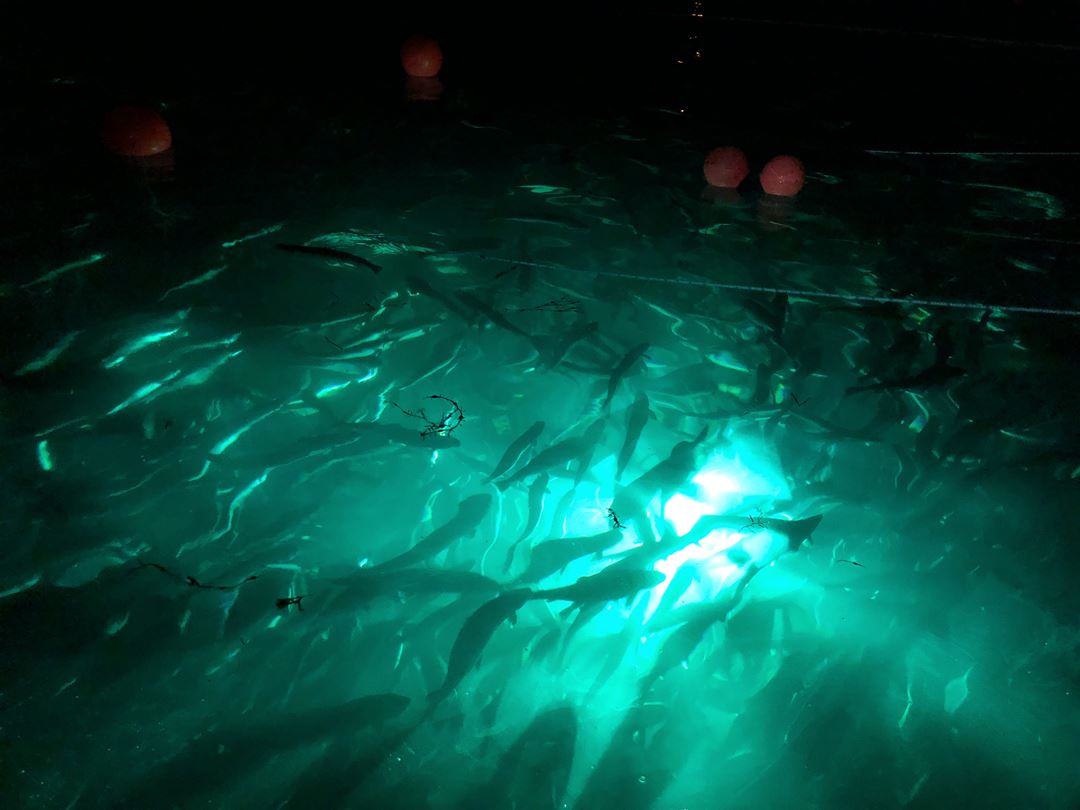Knowledge about the behaviour and vertical distribution of infectious sea lice stages is necessary background information for the aquaculture industry to implement targeted and effective measures against lice infestations. For instance, the depth distribution of infectious copepodites will be decisive for how deep a lice skirt needs to be to function satisfactorily.
Artificial underwater lighting is used at many salmon farming sites to increase feeding activity and growth. The planktonic stages of sea lice are normally attracted by light, and this should be considered with regard to placement and spectral composition of the light sources to prevent them from causing increased infection pressure. Knowledge about how sea lice respond to different light qualities can also be used to optimize light traps used to catch salmon lice
In this project, we will deploy a 12-meter-long transparent lexan pipe, stocked with L. salmonis copepodites, vertically in the sea inside a salmon cage. The pipe is positioned in a rig equipped with a silhouette camera mounted on a motorized carriage for counting lice, as well as sensors for light, depth, and temperature. The rig makes it possible to observe the copepodites vertical distribution within the tube without the water current effect. The lice will be exposed to the prevailing thermoclines (0-11 m), light stimuli from natural daylight,underwater lights and floodlights. Depth distribution data will be recorded every 30 minutes over several days and evaluated in relation to recorded variations in light and temperature as well as diel migration pattern of the standing salmon biomass obtained from echo sounders.
The results will bring more insight into the natural behaviour of salmon lice copepodites in an aquaculture environment which will contribute to better precision and effect of anti-infection measures.
Main objective:
The primary objective of this project is to provide data on the vertical distribution of the infective copepodite stage of the salmon louse (Lepeophtheirus salmonis) in salmon sea-cages in relation to daylight and underwater lighting.
Secondary objectives:
- Describe the diel vertical migration and depth distribution pattern of salmon lice copepodites in a salmon sea-cage.
- Test if certain light qualities can be used to enhance the selectivity of light traps
- Provide data to help improving the efficiency of shielding technologies such as skirts

